Want to win a free track day? Click here!
The standard Porsche 997 has already established itself as a modern classic. Its track-focussed sibling, the Porsche 997 GT3 is becoming next-level special. Weissach’s offerings between 2007-2011 helped propel Porsche’s GT Program into the dominant beast it has become today. No other car manufacturer comes close to Porsche in its ability to provide such a capable road machine and track-weapon – in one. In this Porsche 997 GT3 Buyer’s Guide we will dive into the GT3 and GT3 RS models for both the 997.1 (2007-2009) and 997.2 (2010-2011). We will be examining the details and differences of each model allowing for some direct comparisons. Additionally, we will tell you, what to look out for!
Porsche introduced the 997 GT3 and RS variant to replace the outgoing 996 GT3 models. The 996 GT3 was a modern (water cooled), track focused street car. Its lineage could be traced back to the iconic 993 RS, 964 RS and 1973 911 RS. With the 996 GT3 being well loved already, the evolution to Porsche’s 997 GT3 was met with a great deal of anticipation. Especially due to the overwhelming success of the newly launched 997 Carrera models.

GT3 enthusiasts were salivating at the thought of what was to come with the new Porsche 997 GT3 and GT3 RS. And Porsche did not disappoint when it arrived two years later in July of 2006 as a 2007 model. Porsche’s updated 997.2 GT3 models followed in 2010 with some substantial changes and minor refinements on what was already a huge success for Porsche. This, despite the manufacturer recovering from a global recession.
Like with any used car, a buyer should ensure due diligence before jumping into Porsche 997 GT3 ownership. The following is intended to act as a guide when shopping for that perfect 911 GT3. It is always a good idea to have an independent specialist conduct a pre-purchase inspection on your behalf for any car you are considering.
The oldest examples are now 17 years old, many of which have seen circuit time. GT3s that have been tracked should not deter a potential buyer. These cars were engineered exactly for this. As long as extra maintenance has been undertaken to account for the additional track time, you shouldn’t be too worried. Engine oil, coolant, brake fluid and transmission oil are all items that should be changed more frequently under track duties.
For the most part, 997 GT3s have proven to be very reliable. However, there are a few problem areas to be aware of as detailed below. The good news is that all issues are straightforward to fix, if not already addressed.
Standard 997 GT3s are narrow bodied cars and the RS model is a wide body (44 mm wider rear track). The GT3 RS’ rear wing is made of carbon fiber and is adjustable. It is both lighter and larger than the standard GT3 wing which easily makes up for any added weight from the wider hips. The RS wing provides more downforce and more stability at high speeds. Its front and rear bumpers with aero also set the GT cars apart from the basic Carrera variants. The 997.2 GT3 RS featured subtle front wheel arch extensions to accommodate the wider track for this model. A twin outlet center exhaust completes the exterior.
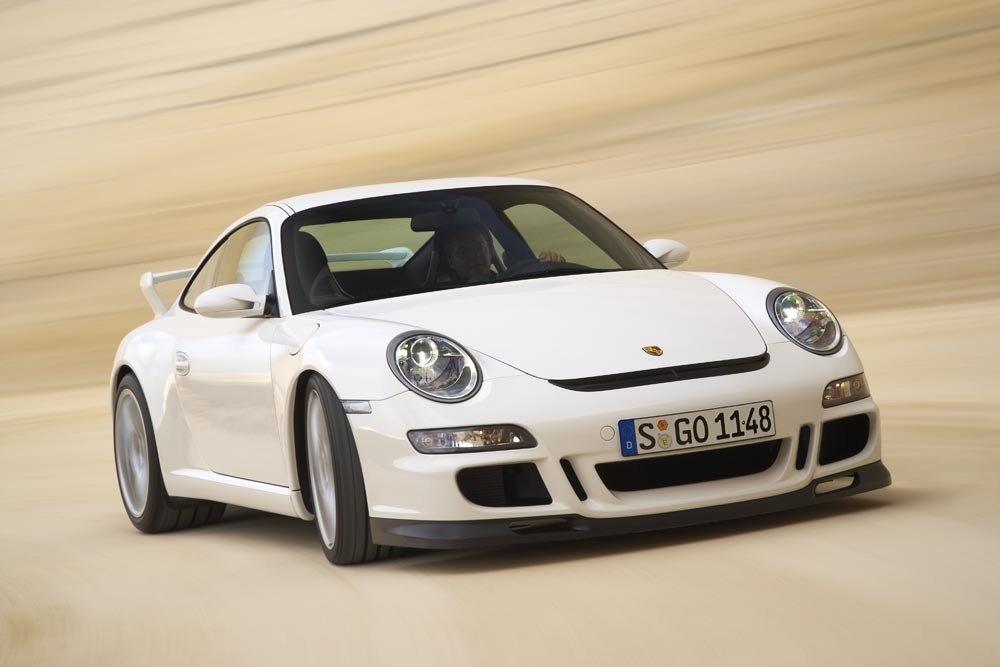

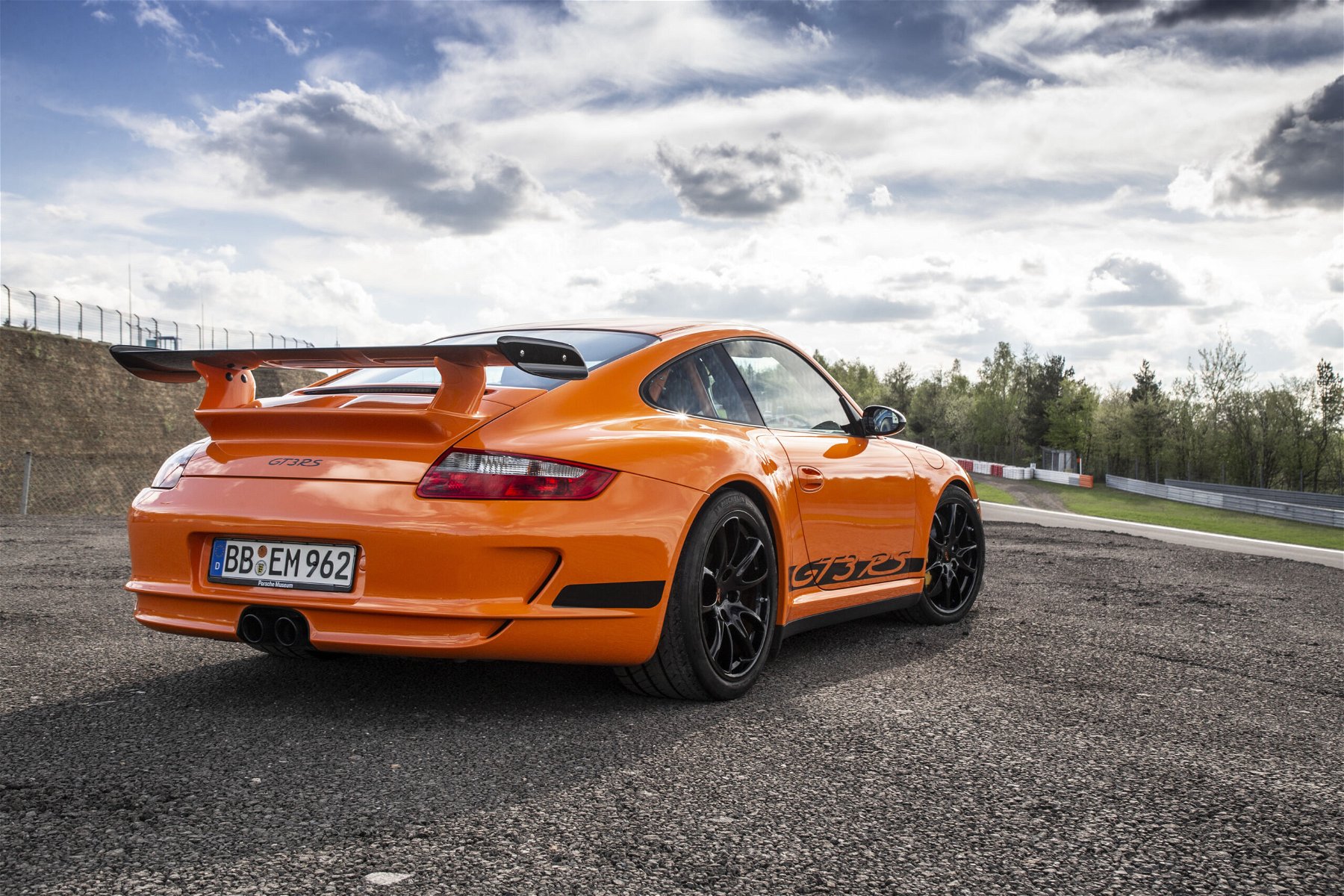
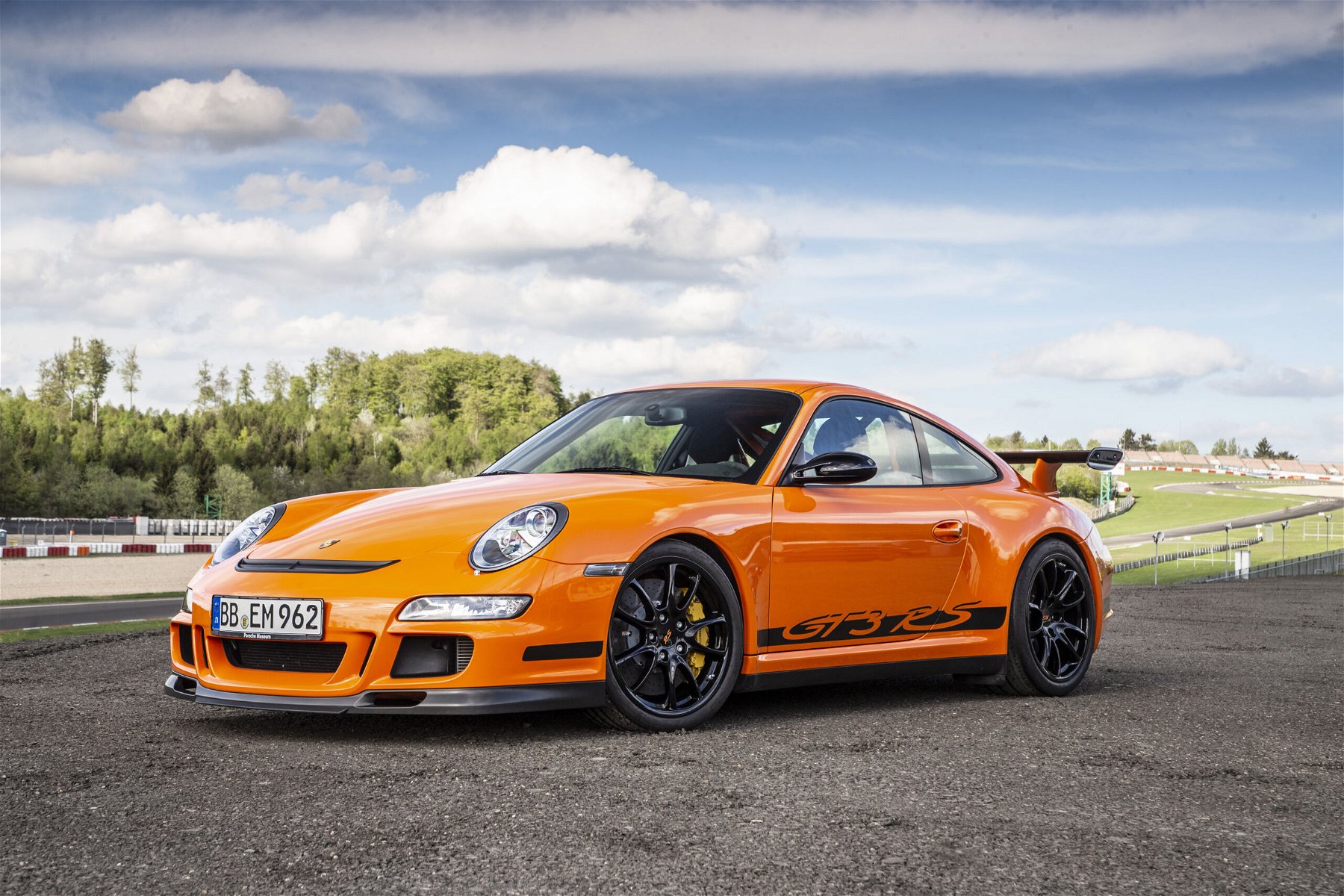
Porsche’s design team dipped their toe in the water when they introduced the 996 GT3 RS – still under Harm Lagaay’s guidance – with bright graphics and color matched wheels. They jumped into the deep end of the pool when designing the 997 GT3 RS. Combining in-your-face graphics with bright orange or green paint, complete with its huge wing, you would be hard pressed not to notice it. So, if you don’t like attention, forget about buying a GT3 RS in one of these stand-out colors. Subtle they are not.
It is not uncommon for GT3s to have had bumpers repaired and/or repainted particularly if the car was involved in circuit driving. Usual wear and tear from striking barriers, road debris, etc. can all be expected. However, look for signs of major collision damage. It is best to have an expert examine the car as it can be difficult for an amateur to detect hidden damage. Expect the front lip spoiler to show scratches. These cars are low and the rubber spoiler is designed to absorb contact. Some owners consider the front lip a consumable item similar to brake pads and simply replace them as required. They are relatively inexpensive.
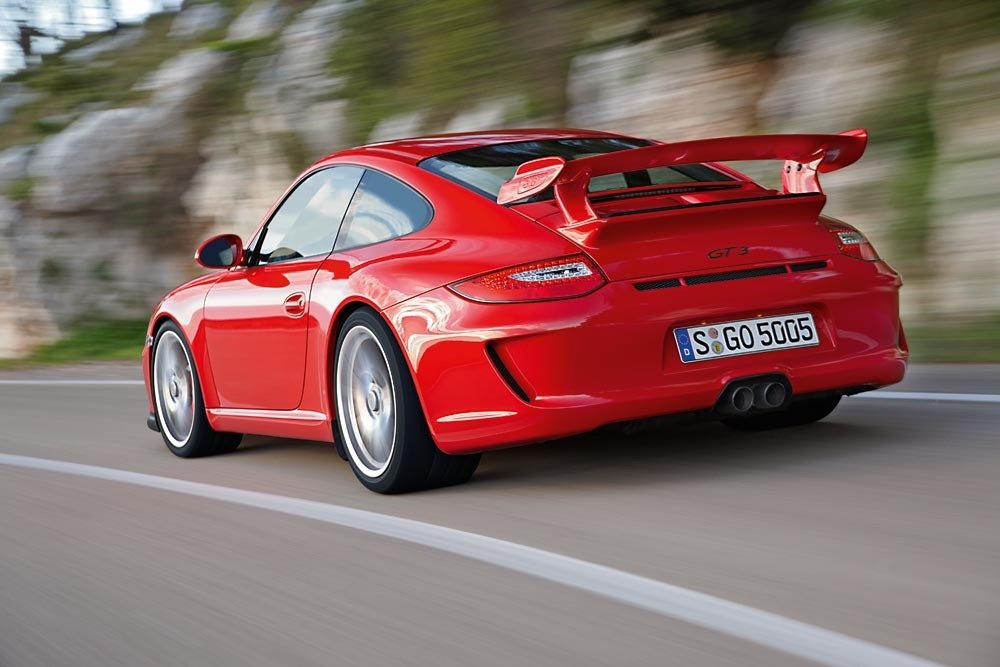
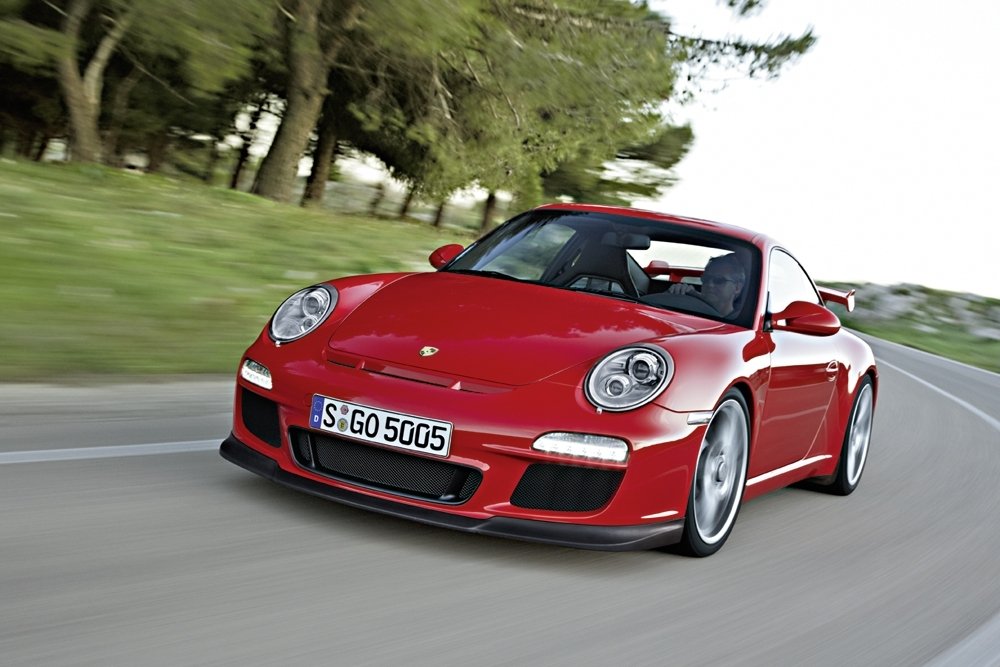

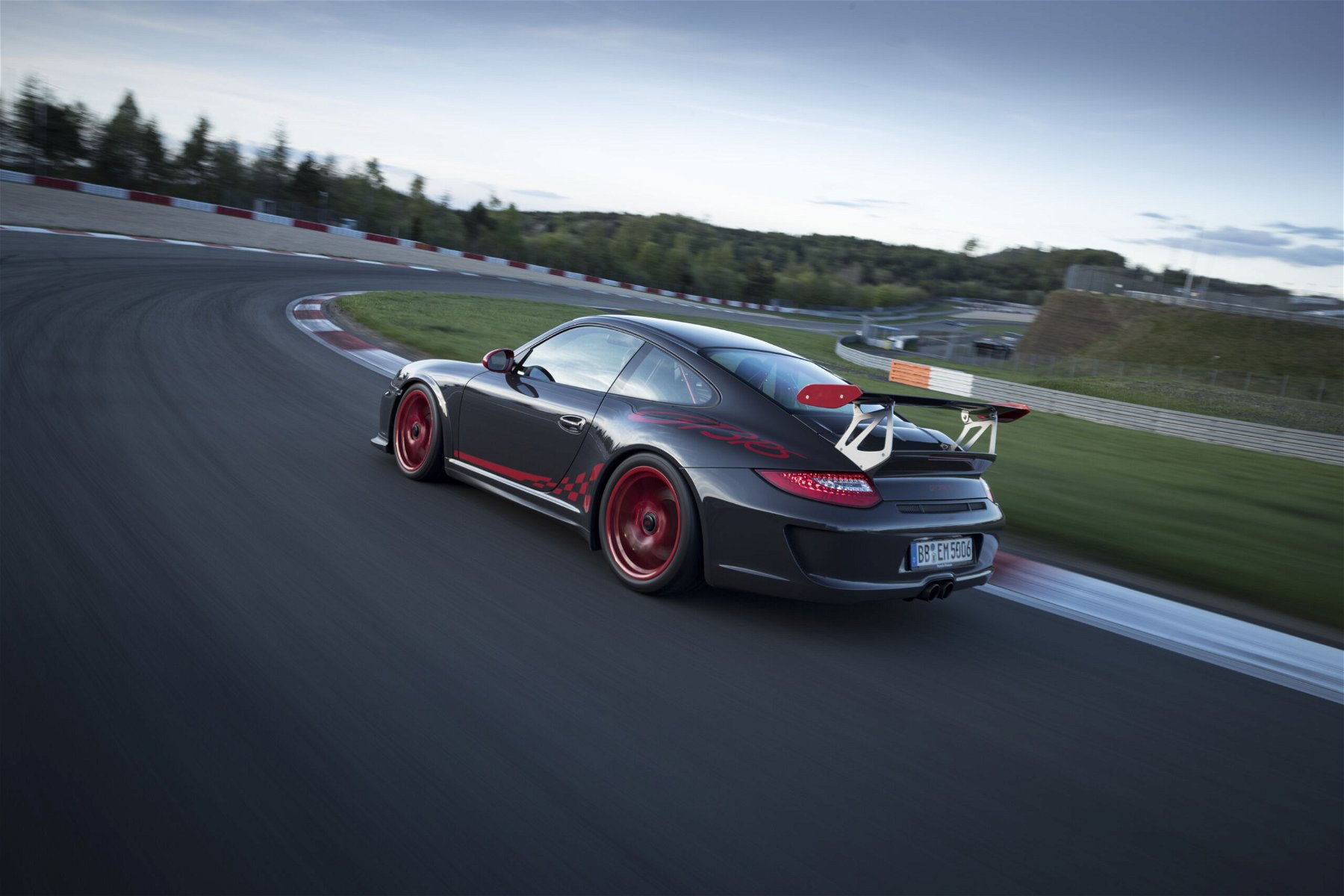
Rear tail light seals (particularly in the 997.2) tend to let moisture in and can cause foggy lenses. Closely inspect the LEDs on front daytime running lights and tail lights. It’s a major fault on tech inspections – depending on your country – if one of them doesn’t work. And if so, replacement can be costly.
If coming from a newer model Porsche or any other new car you will find the interior spartan. But spartan in the best possible way imaginable. There isn’t much for tech or other distractions, just a perfect combination of alcantara and leather. Alcantara provides a certain level of friction for spirited driving, but does not wear well. Expect the seats, steering wheel and shift knob to suffer if wrapped in alcantara. Some professional detailers can do an excellent job of rejuvenating it, if not too worn. But repair isn’t too expensive either.
The Porsche 997 GT3 offered various interior choices, such as regular sports or bucket seats.
Lightweight bucket seats borrowed from the Carrera GT can be had in the early Porsche 997 GT3 RS. They were also an option in the Porsche 997.2 GT3. Lightweight folding sport bucket seats (stunning and very pricey) were standard equipment in the 997.2 GT3 RS and an option in the Porsche 997.2 GT3. Wear tends to occur on the driver”s side leather bolster of the sport bucket seats. Leather replacement bolsters are available individually for purchase from Porsche. Several aftermarket leather specialists also produce matching covers to protect this specific area.
Unfortunately for North American buyers, a number of Porsche’s best options were not available including the sport bucket seats, lightweight composite rear glass and the Clubsport Package. This package added a half roll cage, driver harness mounts, fire extinguisher and a battery kill switch. If an aftermarket roll bar has been fitted to the GT3 you are considering, check to see if it has been welded in. If so, removal is not simple and can be expensive.
Later Porsche 997.2 GT3 models had the updated steering wheel, which was later used in the 991 as well.
Oddly, North American first generation 997 GT3s came standard with a sunroof and no option to delete. Sunny California is where the majority of Porsche’s are sold worldwide, so this might have something to do with that offering. Some of the more hardcore enthusiasts choose to delete a few standard options when building their GT3. PCM (Porsche Communication Management) and air conditioning were occasionally deleted to reduce weight for a more purposeful GT3 experience. However, even Porsche recommends leaving the box checked for AC to help deal with fogged up windscreens in humid conditions.
As with all first generation 997’s, the GT3’s also suffer from worn and/or sticky buttons on the PCM unit, climate control and other areas. These buttons can be easily replaced. Alternatively, the whole Porsche Communication Management system can now be upgraded to the Porsche Classic Communications Management (PCCM) which allows for the most up to date features and modern phone connectivity.
From 996 to 992 all Porsche 911 GT3 cars have naturally aspirated engines and are rear-wheel-drive, not to be mistaken for the turbocharged GT2. The 997 GT3 and GT3 RS have power plants by the name of M97/76 and M97/77. These engines are based on racing engines developed by Porsche engineer Hans Mezger and a direct evolution of the 996 GT3 engines. Mezgers engine design has become legendary due its size/power output ratio (415hp at 7,600 rpm, 405 Nm of torque at 5,500 rpm for the 3.6 liter).
These high-revving, flat-six cylinder engines come with dry-sump lubrication. That ensures consistent oil pressures during high gravitational loads (acceleration, braking and cornering). Porsche used lighter pistons, pins, crankshaft and titanium connecting rods which helped push the engine to its tenacious 8,400 RPM redline.

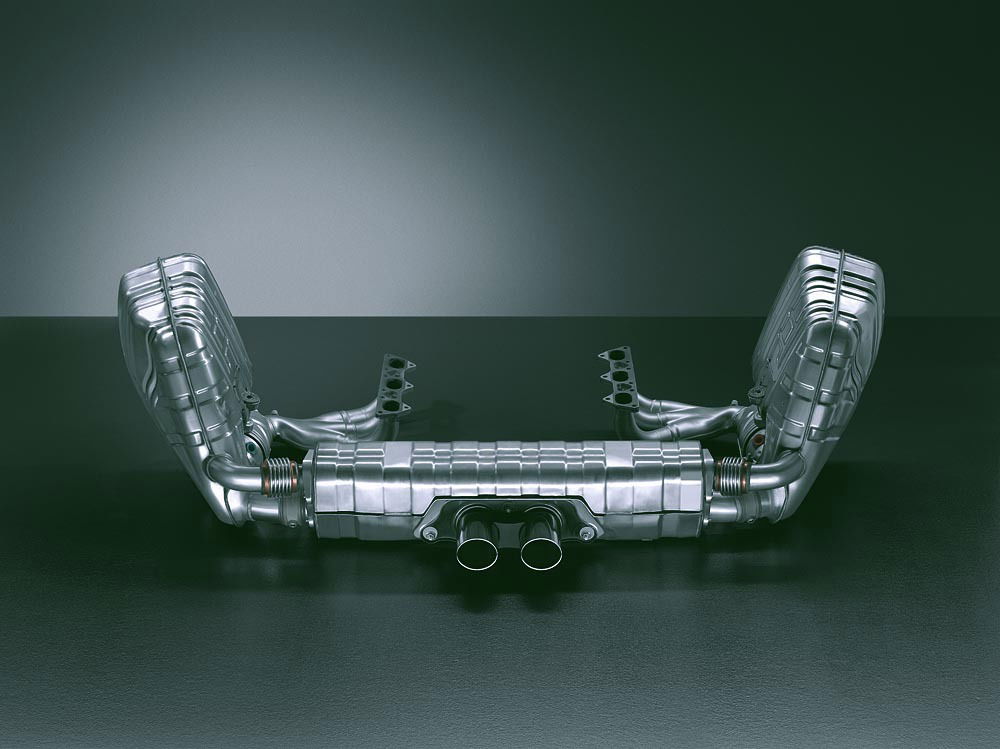
A larger throttle body and a variable-geometry intake manifold allows the engine to breathe more effectively. It works with the sports exhaust system’s large exhaust tracts which generate less backpressure, easing the flow of air through the intake manifold. This combination maximizes power and torque. To further increase performance and fuel economy, valve timing provided a wider operating range thanks to Porsche’s VarioCam technology.
Porsche’s M97/76 and 77 engines are however not related to the M97/01 Carrera engines of the time. Hence, they don’t share the same issues with the less powerful Carreras. Instead, the GT3’s robust mechanicals have been proven to be very reliable. For example, GT3s do not suffer from bore scoring as their Carrera siblings do.
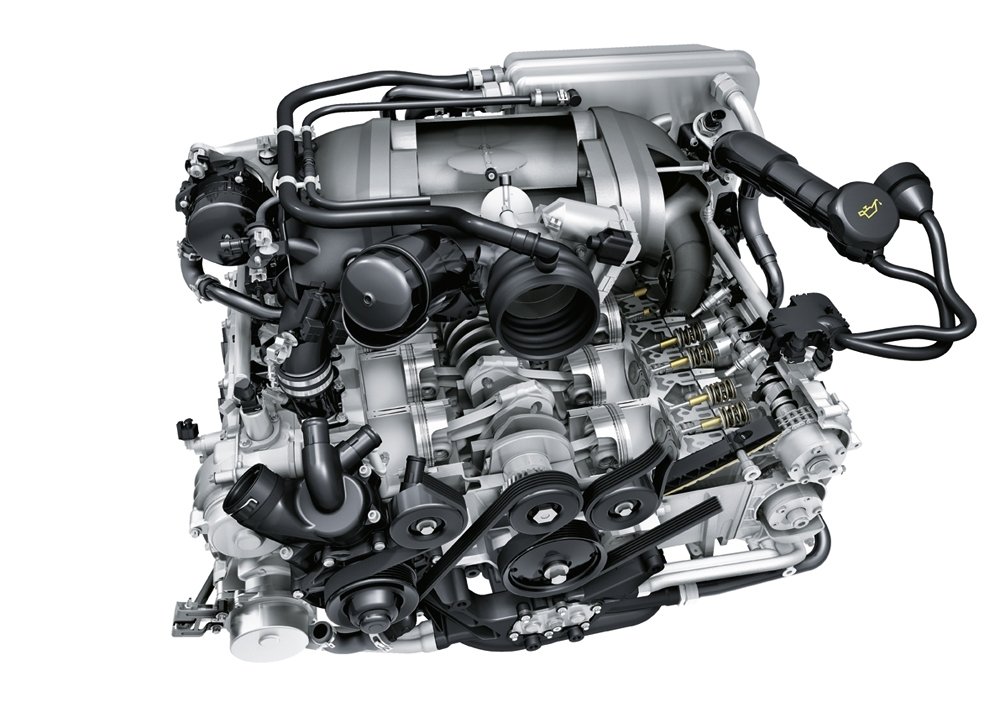
For the facelifted Porsche 997.2 GT3, the engine was updated as well. The M97/77’s displacement was increased to 3.8 liters. This led to 435 hp at 7,600 RPM and 430 Nm of torque at 6,250 rpm. The Porsche 997.2 GT3 RS even managed to squeeze 450 hp out of its 3.8 liter engine at 7,900 rpm. As a first, dynamic engine mounts were offered in the 997.2 GT3. These were standard equipment for the RS and allowed for increased comfort (less vibration) when relaxed driving but would stiffen when the car is pushed. This minimized any movement of the powertrain during hard cornering, further improving the car’s handling characteristics. To save some more weight, the 997.2 GT3 RS featured a lightweight titanium exhaust system.
| model | 997.1 GT3 | 997.1 GT3 RS | 997.2 GT3 | 997.2 GT3 RS | 997.2 GT3 RS 4.0 |
|---|---|---|---|---|---|
| model year: | 2006 - 2008 | 2006 - 2009 | 2009 - 2011 | 2009 - 2011 | 2011 |
| engine: | M97/76 | M97/76+I004* | M97/77 | M97/77+I004* | M97/77R |
| bore x stroke: | 100.0 × 76.4 mm | 100.0 × 76.4 mm | 102.7 × 76.4 mm | 102.7 × 76.4 mm | 102.7 × 80.4 mm |
| capacity: | 3,600 cm³ | 3,600 cm³ | 3,797 cm³ | 3,797 cm³ | 3,600 cm³ |
| power: | 305 kW (415 hp) at 7,600 rpm | 305 kW (415 hp) at 7,600 rpm | 320 kW (435 hp) at 7,600 rpm | 331 kW (450 hp) at 7,900 rpm | 368 kW (500 hp) at 8,250/min |
| torque: | 405 Nm at 5,500 rpm | 405 Nm at 5,500 rpm | 430 Nm at 6,250 rpm | 430 Nm at 6,750 rpm | 460 Nm at 5,750 rpm |
| rev limit: | 8,400 rpm | 8,400 rpm | 8,500 rpm | 8,500 rpm | 8,500 rpm |
| compression ratio: | 12.0 : 1 | 12.0 : 1 | 12.2 : 1 | 12.6 : 1 | 12.9 : 1 |
No Porsche 997 GT3 Buyer’s Guide would be complete without suggesting a thorough DME (Digital Motor Electronics) check for over-revs. The DME records the number of times the car reaches certain ranges in the powerband, hits the rev limiter, and even when it goes beyond. That can happen when you shift down too quickly for example. Although not a true test of an engine’s health, the DME report can provide some insight into how the car was driven.
It is not uncommon for flat-six Porsche engines to occasionally let out a small puff of blue smoke upon startup. You only need to be concerned if this is excessive. Early GT3 RS models can sometimes suffer from RMS (rear main seal) leaks, however most cars with some miles would likely have already dealt with this issue, if it surfaced at all. If the car is a garage queen with very few miles, it could go undetected. An updated seal is the fix.
Another known failure point in all 997 GT3’s was the epoxy adhesive that was used to connect the engine’s coolant lines. The adhesive can degrade over time and the lines begin to leak or completely fail at the fittings. This is more common on cars that have been on track due to the increased heat generated. Many owners have opted to have their coolant lines “pinned” or welded as a preventative measure. This work can be expensive as it requires the engine to be removed. As these cars are starting to age it is common for owners to preventatively replace a variety of other parts “while you are in there”, and the engine is out.
All Porsche 997 GT3 variants were only available with a manual six-speed gearbox. Porsche’s dual clutch gearbox (PDK) was not available in the GT3 until the 991 GT3’s introduction. All 997 GT3s (except 997.2 GT3 RS) used the Getrag G97.90 transmission with the same gearing and limited slip differential. A transmission change occurred with the 997.2 GT3 RS (Getrag G97.92) which utilized shorter gears (quickened acceleration) and a taller sixth gear to maximize top speed.

The 997.2 GT3 RS also had a stiffer clutch and single mass, lightweight flywheel that has less inertia than a conventional flywheel. In combination with the stiff clutch, it can be a little tougher to live with during stop and go traffic. GT3 clutches in general should feel heavy but not overly so. If the latter, it may be time for replacement. Limited slip differentials are also a wear item. Many have been rebuilt or replaced with more robust aftermarket units. Checking if the differential still locks on the lift is therefore highly suggested.
Porsche’s PASM (Porsche Active Suspension Management) system was standard on the 997 GT3. This allowed the driver to electronically soften the damping to make off-track driving a bit more civil. However, Porsche 997 GT3s are still fairly stiff even with PASM. These cars are engineered for spirited driving and track events, not pot-hole cluttered city streets. The variable ratio hydraulic steering is as good as everyone says, direct and responsive. For the 997.2 GT3, Porsche introduced Porsche Stability Management (PSM) which includes the usual ABS and Traction Control, but also Stability Control.
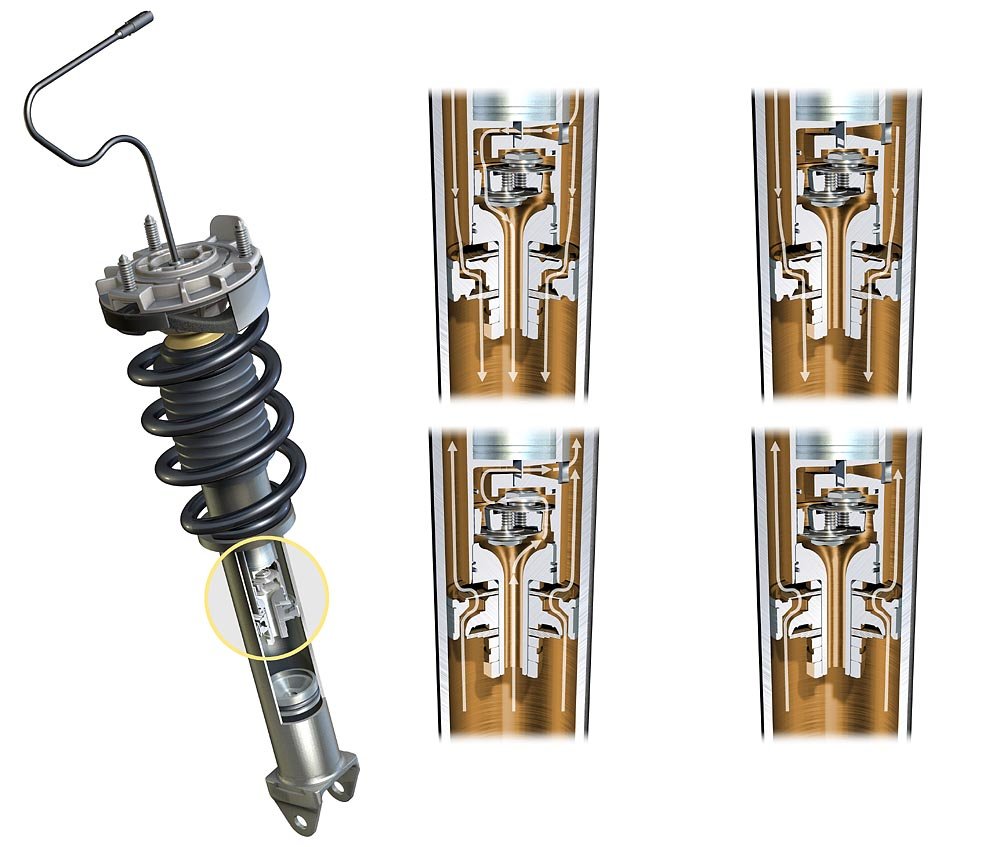

All Porsche 997 GT3s sit 30 mm lower than the Carrera. This obviously lowers the center of gravity, but also gives it the stance it deserves. To give them more response and grip on track, they also received beefed up adjustable anti-roll bars, thicker springs and firmer damping. Wheel hubs and suspension mounts were also designed with durability in mind. A new front axle-lift system with a 30 mm range became optional in the 997.2 GT3. However, this lift system can be problematic. It has been known to malfunction typically due to a faulty pressure switch. Some owners have had to replace these switches on more than one occasion.

If any aftermarket suspension modifications have been completed on your potential Porsche 997 GT3, ensure you understand how this may impact the way it drives. Many GT3s have been modified to better suit track duty. But this will compromise comfort while street driving. Aggressive camber and toe settings may lead to uneven tyre wear. As you run negative camber on track, the tires’ inside shoulder often has less tread than the outside. If it’s the other way round, there’s certainly some alignment issues.
Six piston front brake calipers with 350mm discs and four piston rear calipers were standard on all early Porsche 997 GT3s. The 997.2 GT3 cars received 380 mm fronts. Porsche Ceramic Composite Brakes (PCCB) were an option in both the GT3 and GT3 RS models. They are not the best choice if you intend to take your car to the circuit and most will swap them out for steel for this purpose. Examine the brake rotors for excessive cracking which is a common occurrence on GT3s enduring repeated heat cycles. Brake system hardware can also suffer from this increase in heat and should be examined or just preventatively replaced as the cost is minimal.
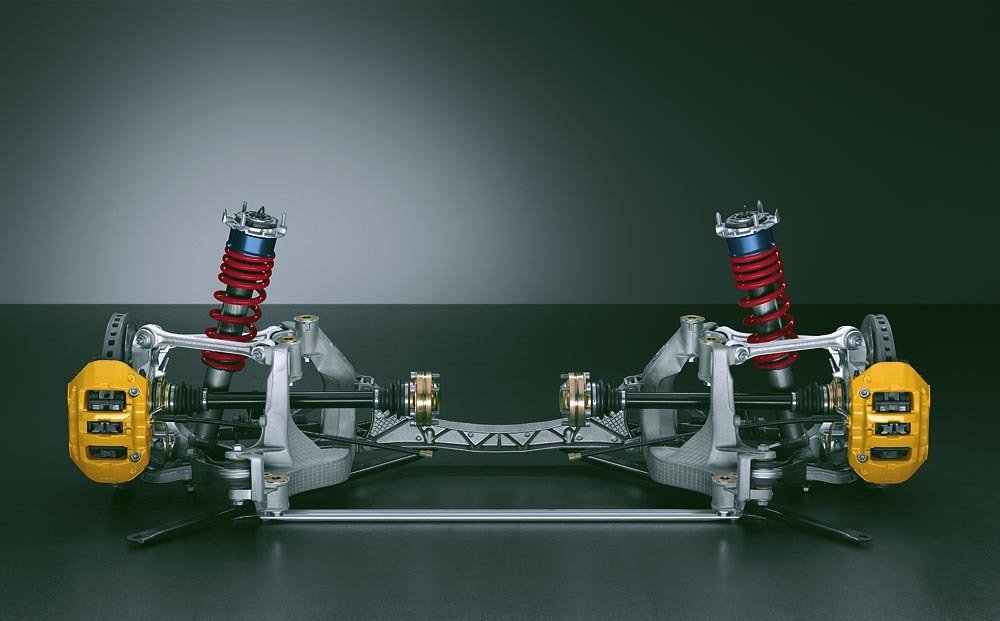
19 inch wheels were standard on both 997 GT3 generations. But they are not interchangeable. The 997.1 had regular bolt, whereas Porsche introduced center lock wheels for the 997.2 GT3. These have since become a trademark for all 911 GT3s and later GTS models. Also for the 997.2 GT3 RS, the front wheels were widened slightly to 9 inches in contrast to the standard 8.5 inches.

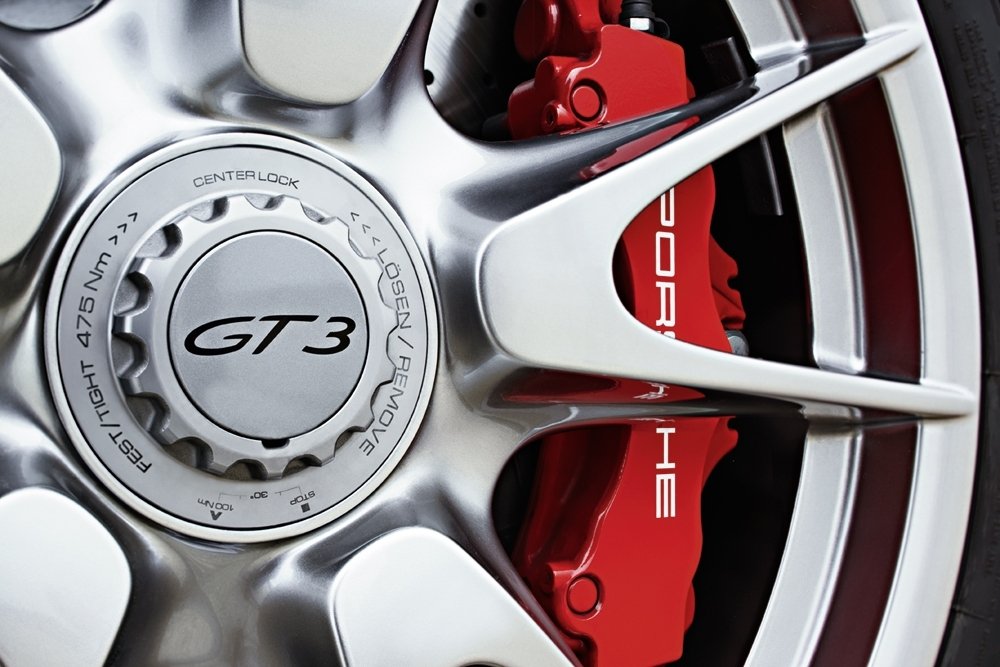
According to the head of GT cars for Porsche, Andreas Preuninger, the Porsche 997 GT3 RS 4.0 was not planned until they were already into the 997 GT3 production run. The GT team put the idea forward hoping to produce one final (2011 only) variant that would both celebrate the Mezger history and highlight Porsche’s engineering ability. This pinnacle GT3 RS 4.0 with its 8500 rpm redline, produces an unreal 500 bhp (125 bhp per liter) and 460 Nm of torque. Its engine block, crank and titanium rods were borrowed from the full-on race cars 911 GT3R and RSR. Other improvements included a full race-spec rear wing. The rear suspension featured articulating rose joints with helper springs. Carbon fiber was used on the hood and front bumper to save weight.
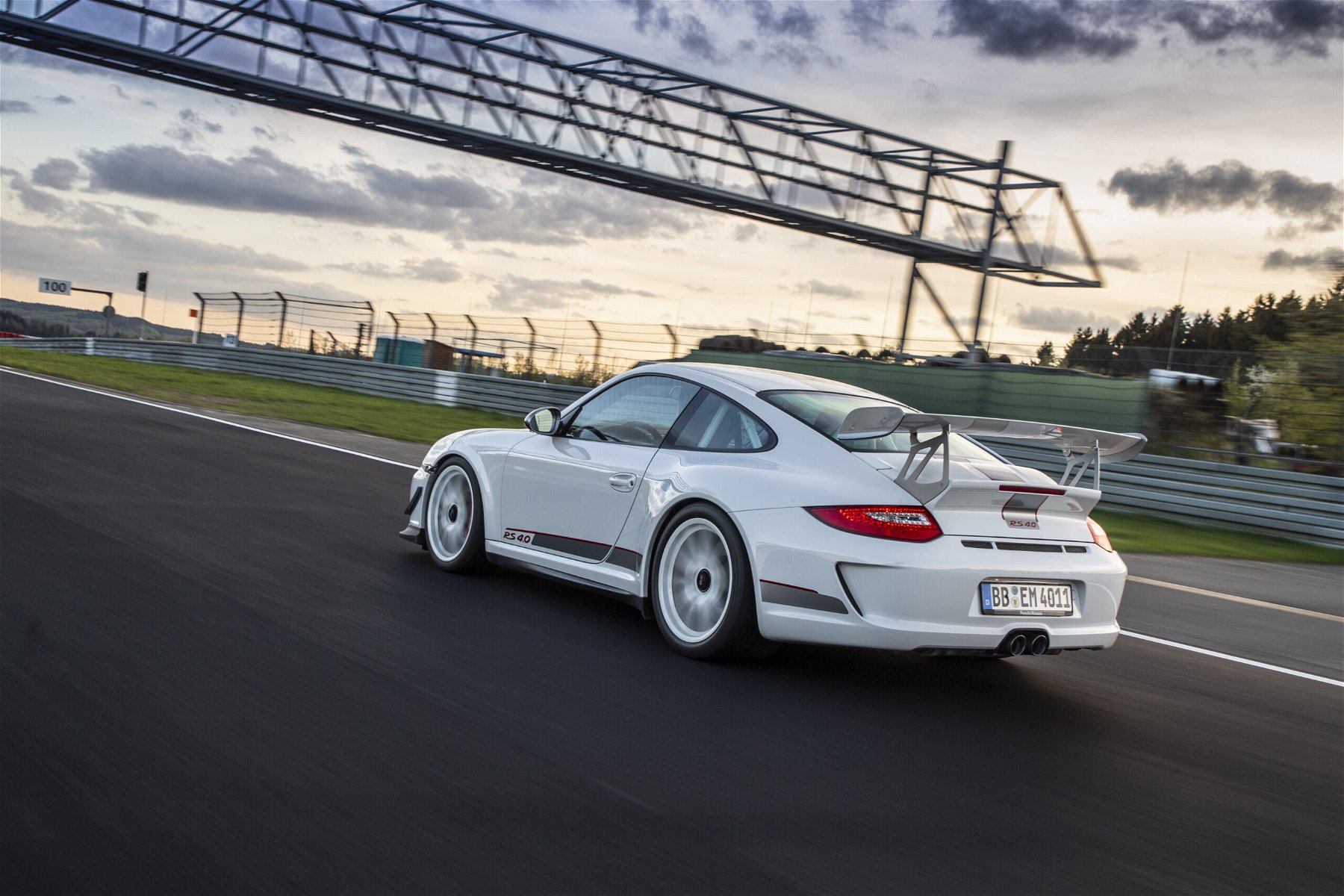

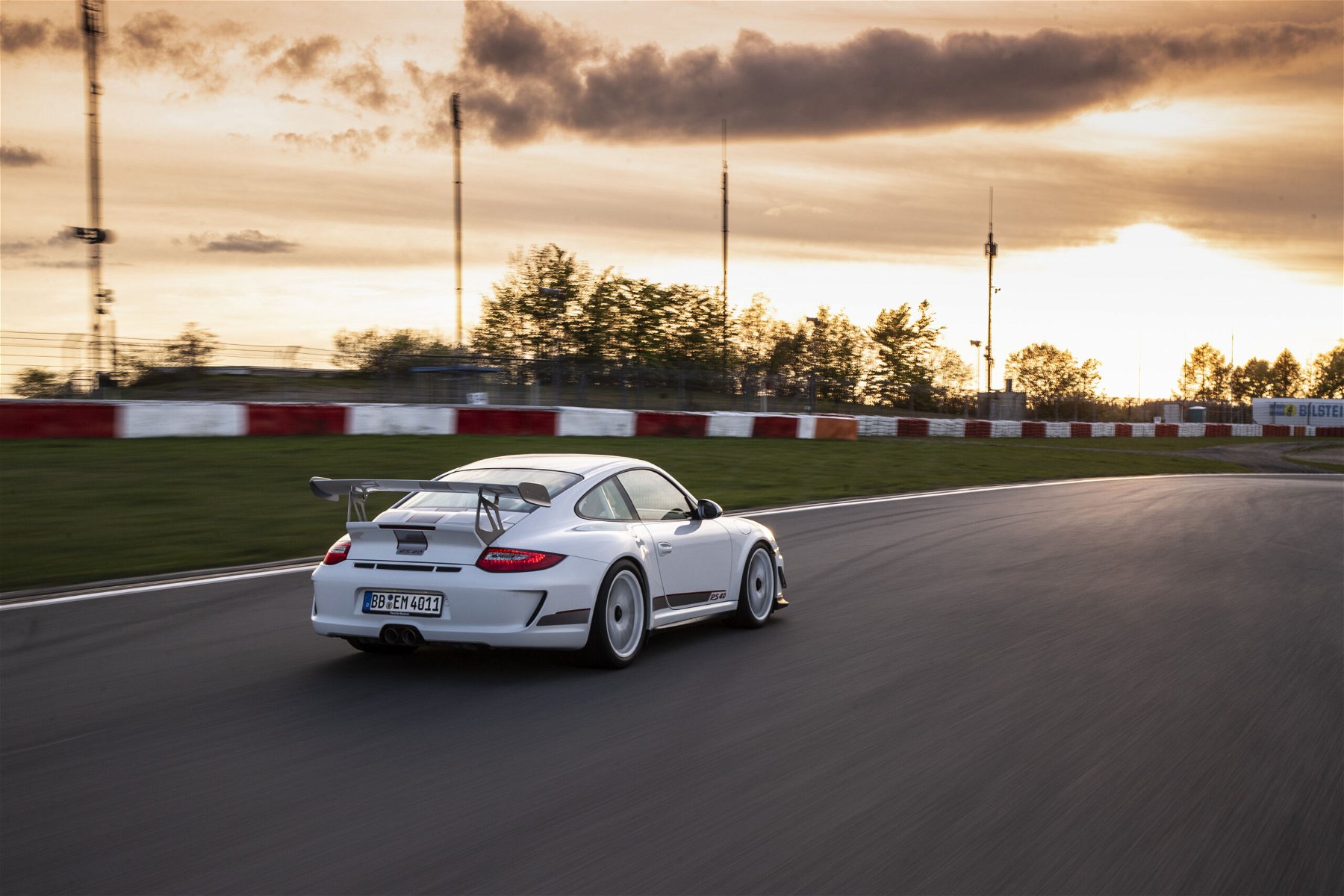
A total of only 613 cars were produced, mostly in white (443 examples) or black (131). However, if you were one of the lucky ones, Porsche also built 39 PTS (paint to sample) GT3 RS 4.0. The PTS program allows the buyer to propose a ‘special’ exterior colour, and if approved by Porsche it is sprayed in that colour. PTS colors were not as common during the 997 era as they are today. So, if you own a PTS 4.0 you have essentially won the Porsche lottery.
For those with the deepest of pockets, the GT3 RS 4.0 is the obvious winner here. But for everyone else the following recommendations might help. It is always a good idea to drive the various Porsche 997 GT3 models to form your own impressions. The driving experience is subjective but all 997 GT3 models are worth a sin. In stock form, they feel generally pretty similar from the driver’s seat. They all have tremendous steering, feel planted and are ready to rev. The fun really begins at 5K rpm. Your smile will rival that of the Joker from Batman when experiencing the combination of acceleration and angry exhaust tone.


Trying to decide which may be best for the individual buyer comes down to several things. Most important of all is: What is the main reason for your purchase? When examining the Porsche 997 GT3 to the GT3 RS, each car is a bit of a compromise in either direction. But there is a common saying amongst Porsche people when comparing the two variants. The GT3 is said to be a street car you can drive at the track and the GT3 RS is a track car you can drive on the street. So, in other words the standard GT3 is a bit better on city streets, the GT3 RS a bit better on the track.
For most buyers, the standard Porsche 997 GT3 is more than enough car for any situation it is found itself in. But it doesn’t make financial sense to buy a standard GT3 if you are going to go down the slippery slope of modifications to make it more track capable. Just buy the RS to begin with, you will likely save money in the long run. Both cars are destined to become collectible and future values will remain strong in years to come. Especially the rarer RS models seem to be good value at the moment.
It is always fun to cross shop other models that are similar in cost to the car you are considering. You can find a variety of 911s which are in the same financial ballpark to the respective 997 GT3s. A quick search reveals that you can buy a used 991 Carrera S and even some high spec 992 Carreras for similar money. However, the GT cars will most likely appreciate in value, while regular Carreras probably won’t. The GT3 also has the racing heritage that cannot be duplicated in a standard spec 911. On top of that, the Porsche 997 GT3 is aging beautifully and offers the unique combination of a modern, yet analog driving experience. If you like the idea of taking your car to the circuit one weekend and through a mountain pass the next, the choice is obvious.
© images: Porsche
| 997.1 GT3 | 997.1 GT3 RS | 997.2 GT3 | 997.2 GT3 RS | 997.2 GT3 RS 4.0 | |
|---|---|---|---|---|---|
| model year: | 2007 – 2009 | 2007 – 2009 | 2009 – 2012 | 2010 – 2012 | 2011 |
| engine: | M97/76 | M97/76+I004* | M97/77 | M97/77+I004* | M97/77R |
| capacity: | 3,600 cm³ | 3,600 cm³ | 3,797 cm³ | 3,797 cm³ | 3,600 cm³ |
| bore x stroke: | 100.0 × 76.4 mm | 100.0 × 76.4 mm | 102.7 × 76.4 mm | 102.7 × 76.4 mm | 102.7 × 80.4 mm |
| power: | 305 kW (415 hp) at 7,600 rpm | 305 kW (415 hp) at 7,600 rpm | 320 kW (435 hp) at 7,600 rpm | 331 kW (450 hp) at 7,900 rpm | 368 kW (500 hp) at 8,250/min |
| torque: | 405 Nm at 5,500 rpm | 405 Nm at 5,500 rpm | 430 Nm at 6,250 rpm | 430 Nm at 6,750 rpm | 460 Nm at 5,750 rpm |
| compression ratio: | 12.0 : 1 | 12.0 : 1 | 12.0 : 1 | 12.2 : 1 | 12.6 : 1 |
| valvetrain: | dual overhead camshafts (DOHC) variable intake cam (VarioCam) | dual overhead camshafts (DOHC) variable intake cam (VarioCam) | dual overhead camshafts (DOHC) variable intake cam (VarioCam) | dual overhead camshafts (DOHC) variable intake and exhaust camshaft | dual overhead camshafts (DOHC) variable intake and exhaust camshaft |
| fuel injection: | Bosch Motronic ME 7.8, sequential Multi-Point manifold injection | Bosch Motronic ME 7.8, sequential Multi-Point manifold injection | Bosch Motronic ME 7.8.2, sequential Multi-Point manifold injection | Bosch Motronic ME 7.8.2, sequential Multi-Point manifold injection | Bosch Motronic ME 7.8.2, sequential Multi-Point manifold injection |
| ignition: | contactless single ignition | contactless single ignition | contactless single ignition | contactless single ignition | contactless single ignition |
| cooling: | watercooling | watercooling | watercooling | watercooling | watercooling |
| gearbox: | 6-speed manual gearbox G97/90 | 6-speed manual gearbox G97/90 | 6-speed manual gearbox G97/90 | 6-speed manual gearbox G97/92 | 6-speed manual gearbox G97/92 |
| drive: | rear-wheel-drive | rear-wheel-drive | rear-wheel-drive | rear-wheel-drive | rear-wheel-drive |
| brakes: | ventilated, drilled disc brakes (350 mm) 6/4-piston fixed calipers | ventilated, drilled disc brakes (350 mm) 6/4-piston fixed calipers | ventilated, drilled disc brakes (380/350 mm) 6/4-piston fixed calipers | ventilated, drilled disc brakes (380/350 mm) 6/4-piston fixed calipers | ventilated, drilled disc brakes (380/350 mm) 6/4-piston fixed calipers |
| front suspension: | MacPherson-struts, trailing arms and wishbones, anti-roll-bar | MacPherson-struts, trailing arms and wishbones, anti-roll-bar | MacPherson-struts, trailing arms and wishbones, anti-roll-bar | MacPherson-struts, trailing arms and wishbones, anti-roll-bar | MacPherson-struts, trailing arms and wishbones, anti-roll-bar |
| rear suspenion: | Multi-Link rear axle with LSA-system (lightweight-stability- agility), subframe and anti-roll-bar | Multi-Link rear axle with LSA-system (lightweight-stability- agility), subframe and anti-roll-bar | Multi-Link rear axle with LSA-system (lightweight-stability- agility), subframe and anti-roll-bar | Multi-Link rear axle with LSA-system (lightweight-stability- agility), subframe and anti-roll-bar | Multi-Link rear axle with LSA-system (lightweight-stability- agility), subframe and anti-roll-bar |
| front spring setup: | struts with twin-tube gas shocks | struts with twin-tube gas shocks | struts with twin-tube gas shocks | struts with twin-tube gas shocks | struts with twin-tube gas shocks |
| rear spring setup: | struts with single-tube gas shocks | struts with single-tube gas shocks | struts with single-tube gas shocks | struts with single-tube gas shocks | struts with single-tube gas shocks |
| track width: | 1497/1524 mm | 1497/1558 mm | 1497/1524 mm | 1509/1554 mm | 1509/1554 mm |
| wheelbase: | 2355 mm | 2360 mm | 2355 mm | 2355 mm | 2355 mm |
| wheels: | 8.5 J x 19 / 12 J x 19 | 8.5 J x 19 / 12 J x 19 | 8.5 J x 19 / 12 J x 19 | 8.5 J x 19 / 12 J x 19 | 9 J x 19 / 12 J x 19 |
| tyres: | 235/35 / 305/30 ZR 19 | 235/35 / 305/30 ZR 19 | 235/35 / 305/30 ZR 19 | 245/35 / 325/30 ZR 19 | 245/35 / 325/30 ZR 19 |
| dimensions l x w x h: | 4445 × 1808 × 1280 mm | 4460 × 1852 x 1280 mm | 4460 × 1808 × 1280 mm | 4460 × 1852 x 1280 mm | 4460 × 1852 × 1280 mm |
| kurb weight: | 1,395 kg | 1,375 kg | 1,395 kg | 1,370 kg | 1,360 kg |
| top speed: | 310 kph | 310 kph | 312 kph | 310 kph | 310 kph |
| accleration 0 – 62 mph: | 4.3 s | 4.2 s | 4.1 s | 4.0 s | 3.9 s |
| production numbers: | 3,329 | 1,909 | 2,256 | 1,619 | 613 |
Elferspot magazine